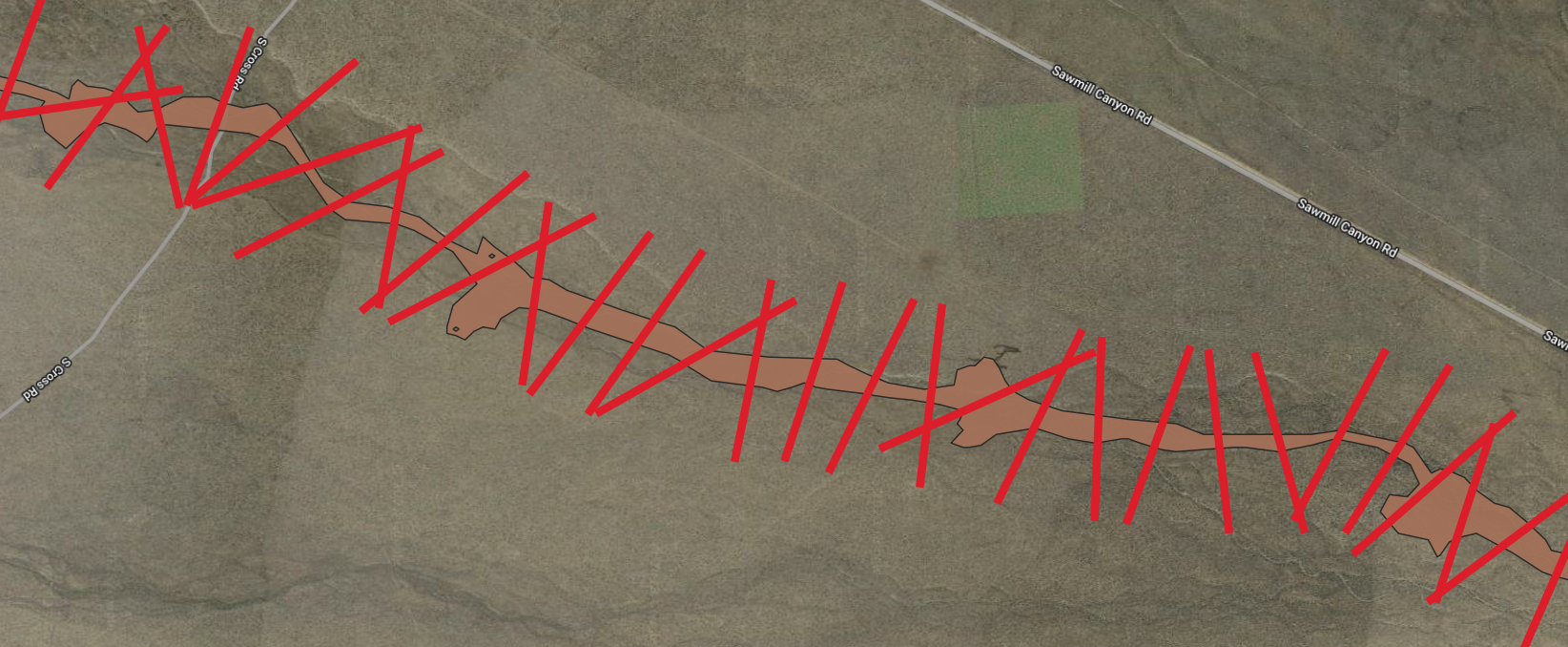Cross Sections
Cross sections are transect lines across a riverscape. They are used to measure the elevation of the river bed and the water surface at a given point in time.
Cross sections can also be used to subdivide a polygon into segments as a way of generating a sample frame.
Importing Existing Cross Sections
You can import an existing polyline feature class and use it as a cross section layer. Importing existing data is covered in Importing Features.
Create New Cross Sections
Right click on the Cross Sections folder in the QRiS project tree and select Create New (Manually Digitized) Cross Sections. This will open a window where you can specify the name and description of the cross sections. You can also specify metadata key/value pairs for important information about the database. Click OK and the cross sections will be created and displayed in the map view. Use the built in QGIS editing capabilities to edit the cross section geometries.

Editing Cross Section Properties
To edit the properties of a cross section, right click on the cross section in the project tree and select Properties. This will open a window where you can edit the name, description, and metadata of the cross section. You can also add the cross sections to the map and use the built in QGIS editing capabilities to edit the cross section geometries.
Generate a Sample Frame
The sample frame tool generates sample frames from three inputs features that you have already imported or created. To use the sample frame tool:
Right click on the cross section layer within your Cross Sections node and choose Generate Sample Frame and the create sample frame dockable window will appear.
Refer to Create a New Sample Frame from Existing QRIS Layers for further instructions as both of these use the same tool.
Deleting Cross Sections
To delete a cross section, right click on the cross section in the project tree and select Delete. This will remove the cross section from the project.